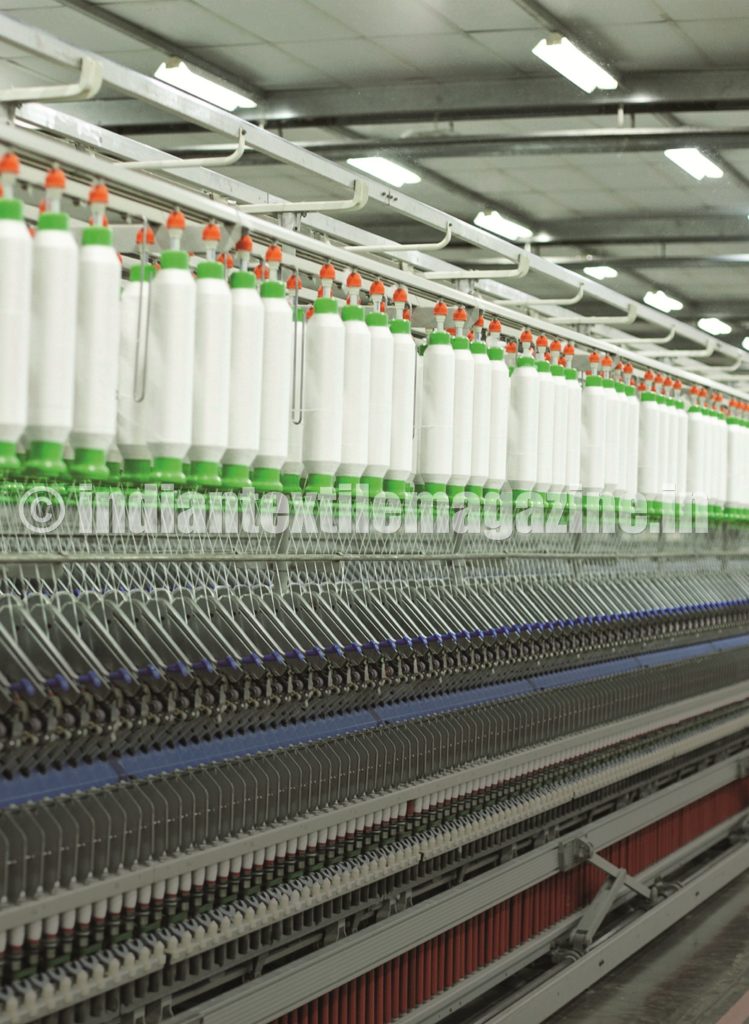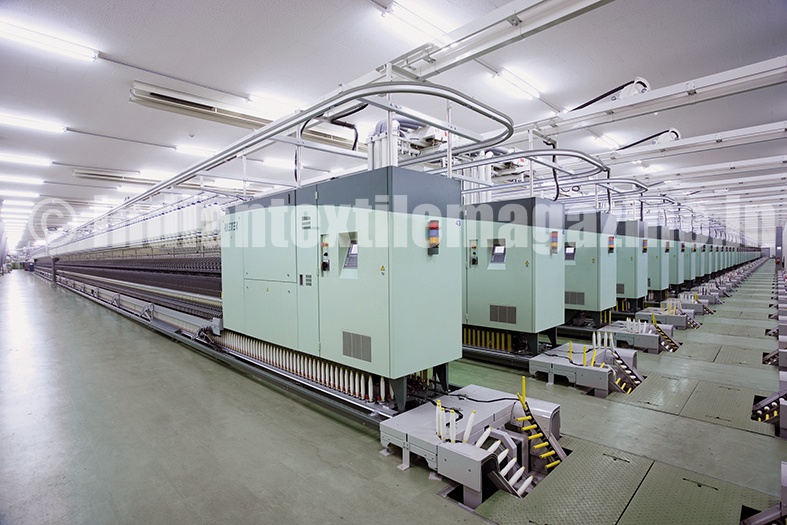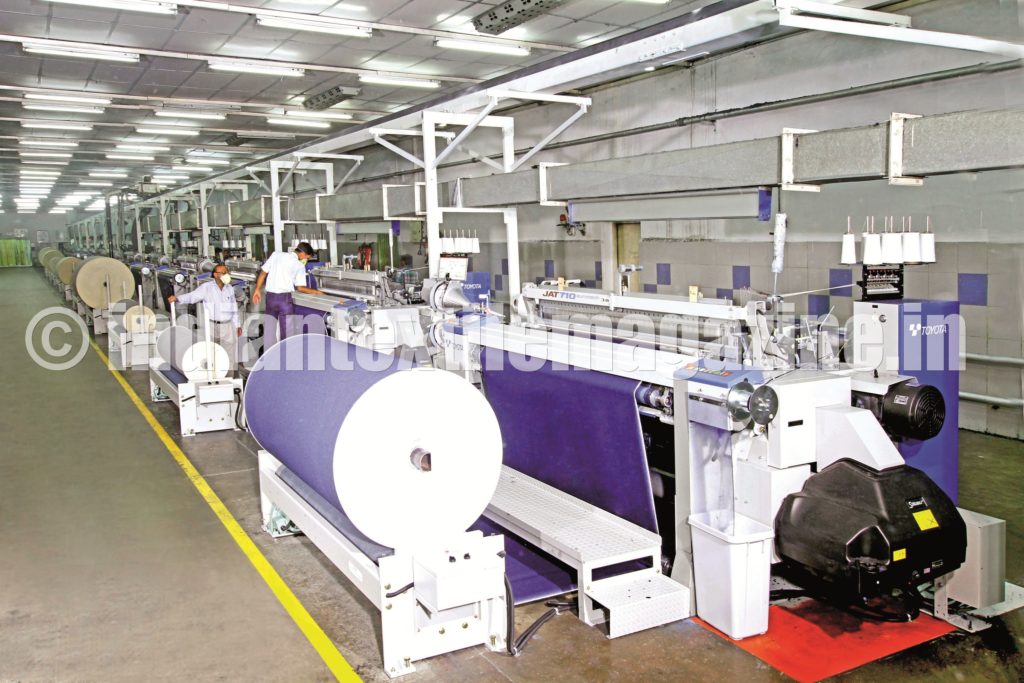Gujarat has always maintained a lead over other States, whether in raw cotton, cotton fabric or man-made fibre fabric production. From the time the Textile Policy was announced in September 2012, the State has attracted investments amounting to Rs. 9,208 crores in varied textile segments like cotton ginning, spinning, weaving, processing, made-ups and technical textiles till March 2016.
Gujarat is the largest producer of raw cotton with 33 per cent of overall cotton production in the country and also exports 60 per cent of the fibre from India. It is also the biggest producer of man-made fibre fabrics and accounts for 38 per cent of India’s total output. It is also India’s second largest producer of cotton fabrics with production totalling 390 million metres per annum.
The State contributes 25 per cent to the country’s textile manufacturing output, 12 per cent to textile exports and also houses the highest number of medium and large fabric processing units which number over 600. Ahmedabad is now known as the ‘Denim Capital of India’. Gujarat produces 65 per cent of the denim fabric in the country, while its textile market is estimated to have reached $25 billion by fiscal 2017.
The achievements do not stop here. Gujarat produces 30 per cent of the country’s woven fabric, is home to more than 50 per cent of the country’s processing machinery manufacturers and 90 per cent of weaving machinery manufacturers. Post the announcement of Textile Policy in 2012, the State has increased its spindle capacity by one million units. It is also a leading manufacturer of technical textile fabrics, by contributing to 25 per cent of the country’s technical textile fabric output.
While attracting investments into the textile and apparel sector, Gujarat has also ensured that skilled staff and workers too are available. There are 28 industrial training institute’s (ITI’s) spread across the State, which along with other skills, also provide industrial training courses on textiles and garments and have an intake of around 6,000.
Specific textile courses offered by these ITI’s include cutting and sewing, embroidery and needle work, computer-aided dress making and dress design, tailoring, pattern making and finished garment checking. There are also colleges in the State which offer bachelors and masters degrees in textile technology. All this results in skilled staff and workers being available for an investor.
Alongside there are also other major academic institutions across the State which offer training programmes, like the Ahmedabad Textile Industrial Research Association (ATIRA), Man-made Textile Research Association (MANTRA), National Institute of Fashion Technology (NIFT), Apparel and Leather Technics (ALT) Training College, National Institute of Design (NID) and the Surat Education and Research Society.
There are also a number of textile parks and special economic zones (SEZs) in the State, each of which caters to a specific segment or several segments in the textile value chain.
Under the Textile Policy 2012, the Gujarat Government offers several incentives for those wishing to set up or undertake expansion. These include interest subsidy of 5 per cent on new plant and machinery for value addition chain from ginning, pressing, weaving, dyeing, processing, knitting, garment manufacturing and technology upgradation, while interest subsidy of 6 per cent is offered for those interested in projects in technical textiles.
There is interest subsidy of 7 per cent on new plant and machinery for cotton spinning; refund of VAT on expansion of the existing and new units within the entire value chain from cotton to garment and made-ups; power tariff concession on new investment for cotton spinning at a rupee per unit; and also support for establishing textile & apparel parks. Additionally, the policy also provides financial assistance for building a skill development centre and technology acquisition.
The main objective of the Textile Policy was to attract investments into conventional textiles, high value garment manufacturing, cotton and synthetic-based spinning, weaving and processing units.
The policy also envisaged investments in various segments and applications of the technical textiles sector, like glass fibre battery separator, fusing belts, high mesh filters, industry felt, woollen felt, and slings for bulk handling, nonwoven fabrics, fire retardant fabrics, geotextiles, etc.
The policy incentives are in addition to the incentive schemes of the Union Government, which also offers various subsides. These include the Technology Upgradation Fund Scheme (TUFS), loans at low interest rate for technological upgradation, Export Promotion Capital Goods Scheme (EPCG), zero duty scheme for import of capital goods for pre-production, production and post-production of export items, and many other incentives.
In addition, in its State budget for 2017-18, the Gujarat Government announced a special package of Rs. 1,000 crores for the micro, small and medium enterprises (MSMEs) sector. The special package offers enhanced assistance to MSMEs for market development, technology acquisition, raising finance through SME exchanges, additional assistance for power connections and capital and rental charges.


